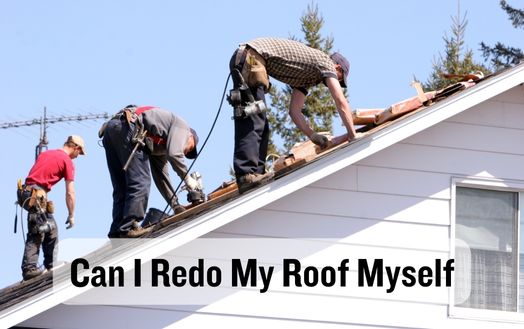
Like a puzzle piece waiting to be completed, the idea of redoing my roof myself has been lingering in my mind. The thought of taking on such a significant project fills me with a mix of excitement and uncertainty. Can I redo my roof myself? Can I navigate the complexities of roofing materials and ensure a job well done?
As I ponder these questions, I find myself yearning for guidance and insight, eager to uncover the truth behind this endeavor.
I understand the scale and complexity of roof replacement by assessing the project scope. It’s important to assess the scope of a roof replacement project before starting it and decide if it’s a DIY or professional job.
The scope of the project depends on many factors. One must first assess their roofing experience. If you have roofing experience, you may feel comfortable doing it yourself. If you lack the skills and knowledge, hire a contractor.
Roof size and complexity are also important. A simple roof can be DIYed, but more complicated roofs may require specialized equipment and expertise. The roof’s condition must also be assessed. To ensure proper repairs, consult a professional if there is structural damage or extensive leaks.
DIY roof replacement allows for creative problem-solving and personal growth, making it appealing to innovators. The project’s scope must be assessed realistically and honestly. DIY projects are rewarding, but safety and quality must be prioritized to avoid problems.
To decide whether to DIY or hire a contractor, consider your skills, the project’s complexity, and your roof’s condition.
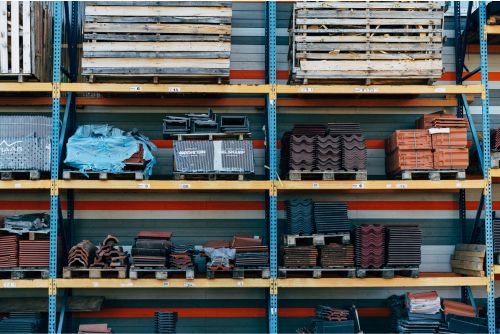
When replacing a roof, understanding the complexity of the roofing material is essential. As a homeowner looking to replace your roof, you must understand the various roofing materials available. Technology has improved roofing materials’ durability, energy efficiency, and performance.
Asphalt shingles are no longer the only roofing option. Today, you can choose from many materials with different properties and benefits.
Metal roofing is popular due to its durability, low maintenance, and sleek appearance. It can withstand harsh weather for decades.
Synthetic slate, which looks like natural slate but costs less, is another innovative roofing material. It’s lightweight, easy to install, and crack, fade, and moisture-resistant. Classic slate and modern technology make this material appealing.
Insulation and energy efficiency are also important when understanding roofing materials. Energy-efficient roofing materials are eco-friendly and reduce heating and cooling costs. Cool and green roofs reflect heat and insulate.
Before replacing my roof, I must assess my skills and experience. Whether you replace your roof yourself depends on your DIY skills and experience. Although such a project may seem exciting and innovative, you must first determine if you have the necessary knowledge and skills.
First, assess your roofing experience. Have you replaced a roof? Are you familiar with the steps? Doing it yourself may be risky if you lack experience. New roofers may struggle with certain skills and techniques.
Your height and comfort should also be assessed. Roof work is dangerous, so safety is paramount. Hire a professional if you’re unsure of your ability to climb steep slopes or work on ladders.
Check your knowledge of roofing materials and techniques. Know the different roofing materials? Do you know how to install each? You could make costly mistakes that cause leaks or other issues without proper knowledge.
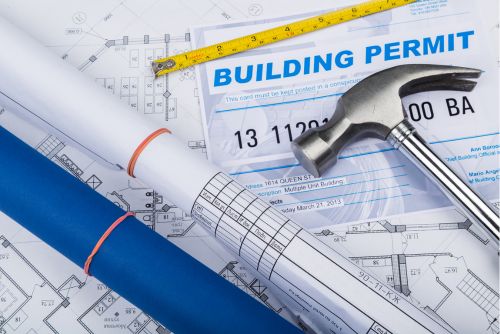
Get permits and licenses before starting your roofing project. This article will help you get permits and licenses for your DIY roof redo to comply with local laws. Permits may be a hassle, but they’re necessary for project safety and legality.
Find out what permits your roofing project needs first. For local permit requirements, contact your local building department or visit their website. This information depends on your location and project scope. Before starting, you must understand the permits.
Gathering all the necessary documentation and identifying the permits follows. The building department may request detailed plans, specifications, and other information. To speed permit approval, provide accurate and complete information.
Apply for a permit at the local building department after gathering the required documents. Application fees vary by jurisdiction. To avoid approval delays, follow the application guidelines and provide all required information.
The building department will examine your application to make sure it complies with local codes. Planning ahead is important because this review may take time. After your permit is approved, you’ll receive the paperwork to redo your roof.
Permits and licenses are essential for DIY roofing projects. It ensures your project meets local safety and regulations. Following the right steps and getting the right permits lets you redo your roof with confidence.
Calculating material and labor costs helps you plan your DIY roof redo. This helps you budget and ensure you have enough resources. Three key factors to consider when calculating the DIY roof redo cost are:
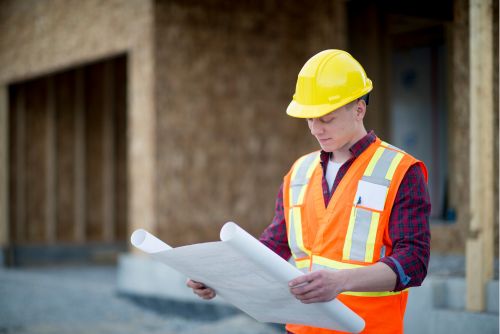
A thorough work area inspection is essential when identifying safety hazards during a roof redo. Safety is paramount when doing DIY projects, especially complex ones like roof repairs or shingle replacements. Being proactive and identifying safety hazards can reduce accidents and ensure a successful roof redo.
Shingles that are loose or damaged can be dangerous. These increase the risk of falls and slips. Check the roof for loose or deteriorating shingles, and replace them immediately to avoid accidents. Beware of weak or unstable roof structures, which can collapse. If the damage is severe, reinforce these areas or hire a professional.
Working at heights is another risk. Roof work often requires ladders, scaffolding, or steep slopes. Safety gear like harnesses, helmets, and non-slip shoes is essential. Use a stable ladder or scaffolding and follow safety instructions before using it.
Roof renovations can pose electrical hazards. Stay clear of overhead power lines and work safely. Avoid using power tools in wet conditions to avoid electric shocks.
Let’s discuss the best time to start a DIY roof project while prioritizing safety. There are several factors to consider when scheduling a DIY roof project:
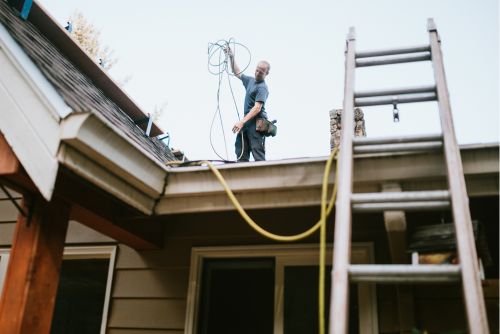
Prepare your roof before redoing it to ensure a successful and long-lasting result. As an innovative homeowner taking on this project, I know that proper preparation is key to success.
Renovating your roof starts with a thorough inspection. The roof’s condition, damage, and leaks are assessed to determine the extent of the work.
Gathering all project tools and materials is essential next. Safety gear like gloves, goggles, and a hard hat, as well as shingles, nails, and roofing felt, may be used. Before starting a roof redo, make sure you have everything you need to avoid delays and interruptions.
Cleaning the roof requires all the right tools and materials. Remove leaves, branches, and dirt with a broom or leaf blower. This will help replace the roof and find any debris-hidden issues.
After cleaning the roof, repairs are necessary. Repair leaks and cracks, and reinforce weak areas with new shingles. This ensures your roof is in top shape before you redo it.
Removing old roofing materials follows roof preparation. This crucial step grants your new roof a solid foundation and long-term durability. There are three creative ways to remove old roofing materials:
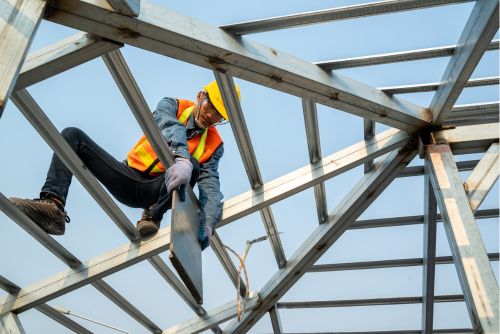
To prolong the life of my roof, I will install new materials. When I redo my roof, I want to use innovative materials with high performance and features. New roofing materials improve my home’s appearance and protect it from harsh weather.
One new roofing material I’m considering is metal. Durable metal roofs are well-known. They resist fire, wind, and impact, making them a reliable homeowner choice. Metal roofs are lightweight and easy to install, reducing redoing costs and labor.
Synthetic slate or shake roofing is another interesting roofing material I want to try. These materials look like slate or shake roofs but are more durable and low-maintenance. Advanced polymers make synthetic roofing materials fade-, crack-, and warp-resistant. Excellent insulation boosts energy efficiency and lowers heating and cooling costs.
Finally, I may install advanced asphalt shingles. These shingles resist algae, retain color, and withstand extreme weather. Their innovative features give me peace of mind that my roof will last for years.
So, can I redo my roof myself? As I consider roof replacement options, I must address any roofing repairs and structural issues. Maintaining roof integrity is essential for longevity and functionality. Here are some roofing repair and structural issues to consider:

Properly sealing and waterproofing your roof will extend its lifespan. The roof redo process requires sealing and waterproofing, which you can do yourself. Saving money and knowing you helped protect your home by doing this can be rewarding.
Sealing and waterproofing your roof requires several steps. First, inspect your roof for cracks, gaps, or damage to repair before sealing. Sealing can begin after repairs.
Roof-specific sealing products are available. These products resist water infiltration and are easy to apply. Before applying sealant, clean the roof to remove dirt and debris that may hinder adhesion.
After cleaning and drying the roof, apply sealant. Please follow the manufacturer’s instructions and apply the sealant evenly and thoroughly. Watch for water pooling in valleys, skylights, and chimneys.
Sealing and waterproofing your roof are essential to water damage prevention. A protective coating on the roof prevents water from penetrating the layers below. This coating keeps your roof in great condition for years.
Look for roof-specific waterproofing products that last. These products are usually applied in layers to increase waterproofing. Remember to follow the manufacturer’s instructions for the best results.
After sealing and waterproofing your roof, be ready for any roof redo surprises. These challenges can be overcome to ensure a successful roofing project. Three key considerations:
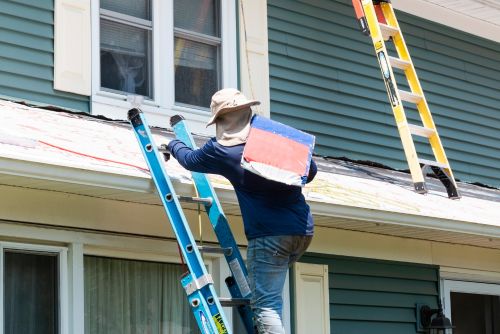
I recommend regular DIY roof inspections and maintenance to ensure its longevity and structural integrity. Proper inspection is essential to spot issues early and avoid costly repairs or replacements.
Check the roof for missing shingles, cracks, and leaks. Leaks are more likely around chimneys, vents, and skylights. To avoid issues, DIY roof maintenance requires proactivity. To avoid water damage from clogged gutters and downspouts, clean them regularly. Trim any overhanging branches or vegetation touching the roof to prevent damage and pest entry.
Check the attic for water damage, such as damp insulation or ceiling discoloration. Check the roof from the inside for light, which indicates gaps or holes. Mold and mildew can indicate water intrusion, so watch for them.
To protect your DIY roof from weather elements and extend its lifespan, apply a roof coating or sealant during maintenance. These products add UV, moisture, and temperature protection.
Your DIY roof may need professional help if any of the visual inspections or maintenance tasks mentioned earlier reveal significant damage or issues beyond your expertise. When to call in the pros is crucial to replacing your roof properly and efficiently. The following three reasons make hiring experienced roofers essential:
In conclusion, while it may be tempting to redo your roof yourself, it’s important to carefully consider the scope of the project, your skills and experience, and the complexity of roofing materials.
Obtaining the necessary permits and licenses, calculating the cost, and dealing with unforeseen challenges can also be time-consuming and challenging. Ultimately, it’s crucial to know when to call in the professionals to ensure a successful and long-lasting roof renovation. Finally, we have answered the question: Can I redo my roof myself?
I think I can install roof solar panels myself. It is a great way to embrace innovation and reduce my carbon footprint.
However, I must consider the installation process’s complexity and ensure I have the skills and knowledge. Consulting a professional or attending a workshop may help. If in doubt, hire an experienced solar panel installer. Safety is paramount.
Managing ventilation issues when redoing your roof is essential for a healthy, efficient home. Airflow is essential to prevent moisture buildup and extend roof life.
For balanced ventilation, install ridge vents, soffit vents, or both. Professionals can assess your needs and recommend the best roof ventilation solution. Don’t skip this roof renovation step for optimal performance and comfort.
For DIY roof replacement, you can reuse some old roofing materials. The materials’ condition must be assessed to ensure they’re still good.
Materials can be reused to save money and waste. Consult a professional or do thorough research to ensure you’re using the right materials and techniques for a DIY roof redo.
Disposing of old roofing materials properly requires best practices.
First, ask your local waste management authorities about local regulations. Asphalt shingles and metal roofing can be recycled. Specialized recycling companies recycle these materials.
For proper disposal, you may need to sort materials into wood, metal, or plastic.
I must regularly inspect and maintain my DIY roof to prolong its life. I inspect at least twice a year, especially after bad weather. This helps me spot problems like loose shingles and leaks and fix them quickly.
Clean gutters and remove debris to prevent damage. Being proactive helps me prolong my roof’s life and avoid costly repairs.